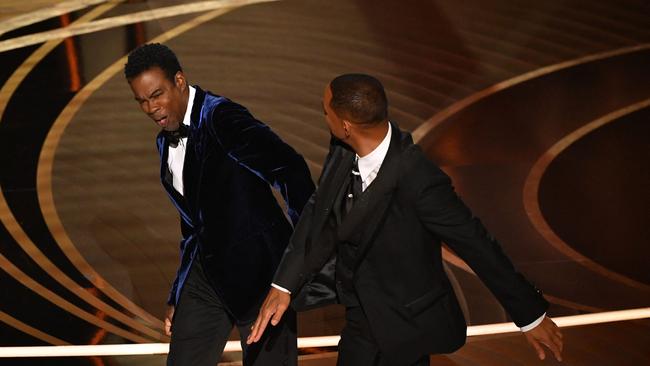
It wasn’t a call for censorship – I still consider the censor’s scissors as dangerous as that slashing knife in the shower scene from Pyscho. But I feared for the impact on the young audience of ever more horrific imagery and called for greater restraint by the film industry. At the same time I coined the term “the pornography of violence”, seeing it as far more problematic than sexual porn.
George didn’t agree. He called his 18-minute film Violence in the Cinema Part 1 and hacked and butchered me as I spoke. There was hanging, stabbing, evisceration – until Arthur’s Adams was little more than a bloodied mouth. Still talking.
My war with Miller continued with the release of his 1979 film Mad Max. I reviewed it, and while acknowledging the brilliance of George’s direction I deplored the sadism that took cinematic violence to a whole new level – an escalation that continued in the three sequels. Far from being angered, Miller and producer Byron Kennedy used my angry quotes in their ads.
All this came to mind with the recent violence at the Oscars. The ruckus on stage seems appropriate to an industry that must have killed millions for fun and profit. A majority of what we deem entertainment involves crime. Serial killers are comedic. And what does the pornography of violence do to society? As an indirect consequence of the genius of the Millers and Tarantinos, the lines blur – as in the Manson murders. Stanley Kubrick agreed. On seeing the ultra-violence of his Clockwork Orange copied in the streets, he withdrew the film. And film is no longer the worst of it. Behold the genocidal slaughter of video games, encouraging kids to be killers.
I’m not saying that the link is as directly causal as cigarettes and lung cancer or climate change and extreme weather. But for decades I’ve been warning that it’s a factor, an ingredient. Desensitising us to violence is the first step. Though that’s hard to prove in a society like the US with its culture of death, where the pornography of violence manifests in everything from the sacred symbolism of guns and the frequency of massacres to “shock and awe” war.
Certainly cinema provides the choreography – as we saw when Brando’s 1953 film The Wild One triggered “me too” behaviour among Melbourne bikies and James Dean vehicle Rebel Without a Cause (1955) provoked fatal games of chicken on Australian roads. That’s what films do: create fashions for us to follow. We mimic movies. It’s on the record that when Hollywood was making gangster movies, the gangsters mimicked the movie stars. The Dream Factory dreams and we dream along. It’s not called “soft power” for nothing, affecting not only teenage behaviour but our politics.
Violence in the Cinema Part 2. One of the things I find most ominous is that Miller’s Mad Max movies now produce as much laughter as horror. The imagery is seen as funny, little different to that of the Keystone Kops in the silent movie era.
Could it be that we’re desensitised?




In 1971, years before the ultra-violent Mad Max starring Mel Gibson, George Miller made an even more violent film starring me. The role of Adams (thinly veiled as “media critic Dr Edgar Fine”) was played by Arthur Dignam and satirised – if that’s the word for 20 minutes of gruesome Grand Guignol – a speech I’d given to a psychiatric conference in Melbourne the year before. My theme was “Violence in the Cinema” and I expressed concern about the way cinemas were becoming as brutal as abattoirs.